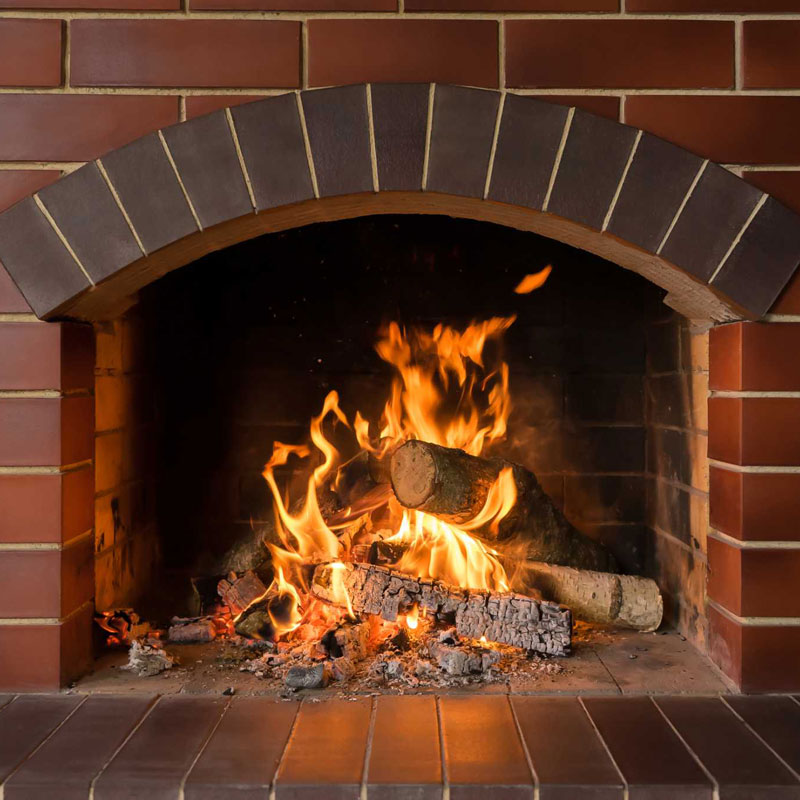Damper Repair
We’ll Repair Your Damper or Install a New One Quickly, so You Can Enjoy Your Fireplace Again
When you’re ready to light up a fire in your fireplace and start relaxing in front of its radiant warmth, one thing that can put a nix on your plans is a broken damper. The damper is the metal plate that sits just over the firebox and closes and opens the flue. But when the damper is broken, rusted, stuck, or providing a poor seal, it can make it difficult to enjoy a fire in your fireplace and keep your home comfortable.

Damper Trouble? It’s Time to Call On ChimneyTEK of Delaware, Kent County’s Experienced Chimney Pros
All working fireplaces need a damper, but if yours is difficult to open and close or you’re looking for ways to prevent downdrafts and energy waste, your damper may be in need of repair or replacement.
Here at ChimneyTEK of Delaware, we’re proud to resolve damper issues for our customers in Dover and the surrounding areas by repairing throat dampers and installing new top-sealing dampers. Whether your damper has come off track, it’s broken, or you’re just ready to replace your damper with one that will do a better job, we can help.
The Different Situations and the Problems of a Damper
- Broken Damper — You shouldn’t have to jam your head up into the fireplace and fuss with the damper; it’s meant to be easy to open and close. If the damper is broken, it may not open or close easily, or at all, making it difficult to safely enjoy a fire in your fireplace and keep animals, birds, and outside air out of your fireplace and home.
- Rusted or Creosote-Riddled Damper —Creosote is a sticky, tar-like, or candied substance that can build up inside of chimney systems with use. If this byproduct of combustion settles on the damper, it can prevent it from opening or closing. The same thing can happen if water or moisture is present in the chimney system and causes the damper to rust. And once again, if you can’t close your damper, you can’t enjoy the protection that it provides, and if you can’t open it, you can’t safely enjoy a fire in your fireplace.
- Poorly Sealing Damper — Even new throat dampers (traditional dampers, which are installed in the throat of the chimney and fireplace) aren’t great when it comes to energy savings. These metal-on-metal components aren’t capable of providing an airtight seal, which means that, even when closed, your damper could be allowing heated air from your home to leave through the chimney and cold air from outside to come down into your home. Why pay to constantly heat your home when that air’s just going to be lost up the chimney or have to contend with cold downdrafts?
What Is a Top-Sealing Damper?
From an ease of use/usability point of view, there’s not much difference between a throat damper and a top-sealing damper. Both are opened using a lever or handle that’s mounted just inside or just outside of the fireplace opening. But otherwise, there are some pretty big differences, the two biggest being the following:
- Throat dampers are installed in the throat of the fireplace or chimney, just below the smoke chamber and flue. Top-sealing dampers, on the other hand, are installed up at the top of the flue. What does that difference make for your chimney? With a top-sealing damper, your entire flue is protected against moisture, birds, animals, and insects when the damper is closed, while a throat damper will only prevent things from entering the fireplace itself.
- Throat dampers are made of metal, so it’s impossible for them to truly seal out all outside moisture and air and keep all conditioned air inside the home. Top-sealing dampers, on the other hand, have rubber gasketing, which means moisture and air are prevented from passing through when the airtight and watertight damper is closed. Not only does that mean no downdrafts and no conditioned air loss, but it also means a warmer flue, better draft, and a more efficient fire.
Contact Us for Damper Repair & Installation
If you’d like to learn more about the dampers we sell and install and how they can save you money on utilities or you’re ready to have your damper inspected, repaired, or replaced, call on ChimneyTEK of Delaware’s experienced and CSIA-certified team here at 302-729-6112. You can also request an appointment online if you’d prefer. We’re here to help, no matter what you need done to your chimney or fireplace. Call today and let our honest, knowledgeable, and friendly team help.
Is it time to have your masonry repaired? Our tuckpointing services are designed to repair and restore masonry of all ages!
